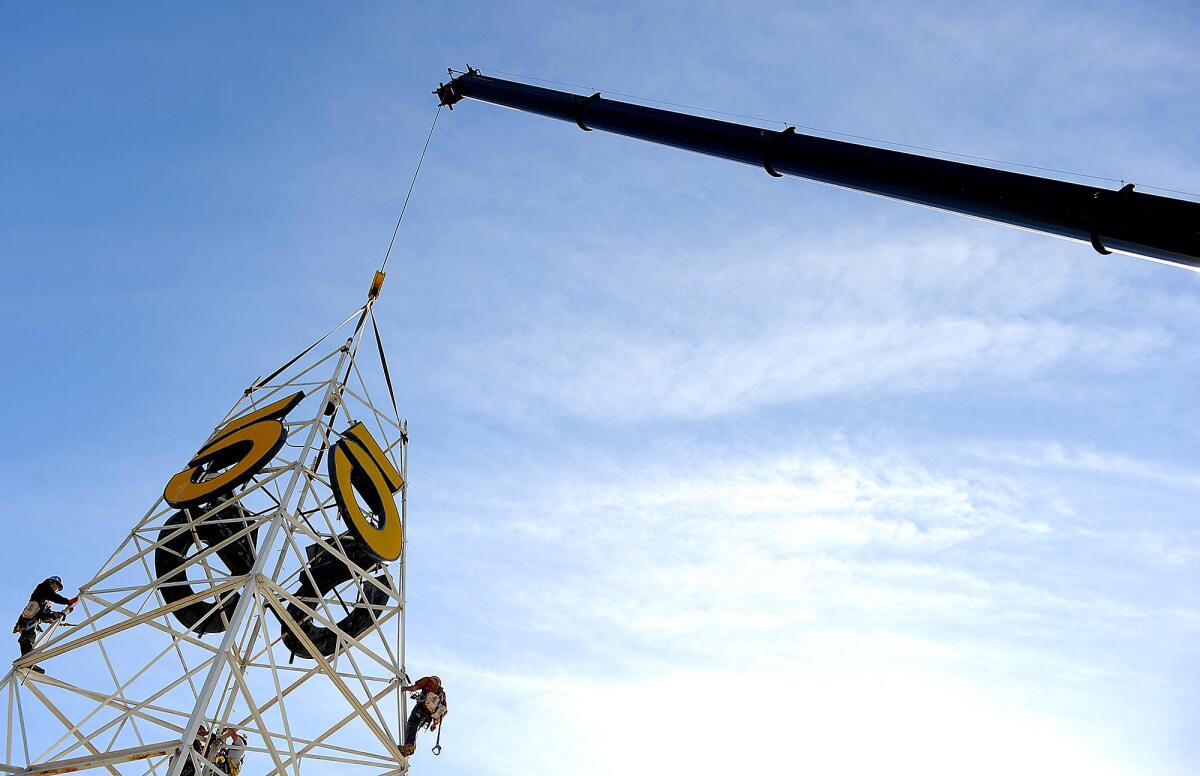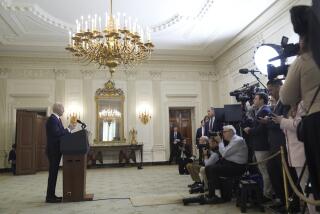Rocked by coronavirus losses, TV, radio, newspapers seek government ad dollars

Every year the federal government spends around $1 billion in advertising to promote its programs and military recruitment.
But many of the local TV, radio and newspaper companies that carry those advertisements are being financially devastated by the economic shutdown in most of the country due to the coronavirus crisis — even as the hunger for news and information on the pandemic is driving up viewing and readership.
So media companies have joined an initiative led by the National Assn. of Broadcasters to push for a significant increase in the current ad budget part of the next fiscal stimulus package being considered by Congress, known as Phase 4.
“For so many broadcasters and newspapers, this is a life-or-death situation,” said Dennis Wharton, an executive vice president for NAB. “The advertising that supports local journalism and hometown radio and TV stations in many cases has simply disappeared. It’s just a desperate situation, and far more dire than anything seen in decades.”
Representatives for media companies have been gearing up a lobbying effort for the plan aimed at expanding federal advertising spending to between $5 billion and $10 billion for the rest of the year, according to executives who have been involved in the developing the proposal but were not authorized to discuss the details.
The federal government was expected to lay out as much as $2 billion in ad spending this year, with additional dollars allocated to encourage participation in the 2020 census. The NAB will ask for spending on pandemic-related ads that instruct citizens on how to get back to work safely, social distancing and wearing masks.
From Walmart to Google, brands have had to adapt their advertising messages to convey more empathy with consumers during the coronavirus crisis.
The extra money could also finance more commercials and print ads for military recruitment and information on other government programs.
The proposal has bipartisan support from 74 U.S. senators and 124 House representatives, who cite the work that local media have done in their communities to keep the public informed on the pandemic.
“Our radio and television broadcasters and rural newspapers provide local and national news, emergency alerts, educational programs, and more to all corners of the United States. In many rural areas, broadcast stations are the predominant or only form of local information,” the senators wrote on April 23 in a joint letter to the Office of Management and Budget Acting Director Russell Vought.
The letter asked that the office “work with federal agencies throughout the government to increase advertising in local newspapers and on broadcast stations in order to help ensure they are able to continue to operate throughout the COVID-19 pandemic.”
The proposal is designed to minimize the perception of the funds being a handout to media companies, as the government will be getting commercials and ads in return. While large media conglomerates such as the Walt Disney Company, Comcast and Fox Corporation own television stations that would likely see some benefit from the increased spending, the aim is to bring relief to local outlets belonging to smaller TV ownership groups.
Radio and local newspapers have also been particularly hard hit by the staggering loss in advertising revenue since the shutdown began last month. Radio and broadcast TV stations are expected to see ad revenue declines in the range of 25% for the year, according to various analyst estimates.
Forty-five radio stations have signed off the air since March 11, the date the World Health Organization declared the coronavirus a global pandemic. Of those, 17, or 38%, specifically cited financial conditions related to the coronavirus pandemic as the reason for going silent.
The figure includes five radio stations in Maine that served their communities for 45 years.
A growing list of radio and TV companies, large and small, have announced layoffs, furloughs, pay cuts, 2-week unpaid vacations and cuts in 401(k) contributions. Newspaper companies, including Los Angeles Times parent California Times, have announced pay cuts and furloughs as well after seeing print advertising revenue evaporate.
Analysts are saying the pullback in advertising is comparable to the Great Recession, which followed the collapse of the financial markets in 2008. Neither newspapers nor radio fully rebounded after the advertising losses the industries experienced in those years.
“The current period, which will probably create a much steeper recession than 2000-01 or 2008-09, will have profound and lasting impacts [on] the current media ecosystem,” media analyst Michael Nathanson of MoffettNathanson LLC, wrote in a recent report.
More to Read
Inside the business of entertainment
The Wide Shot brings you news, analysis and insights on everything from streaming wars to production — and what it all means for the future.
You may occasionally receive promotional content from the Los Angeles Times.











